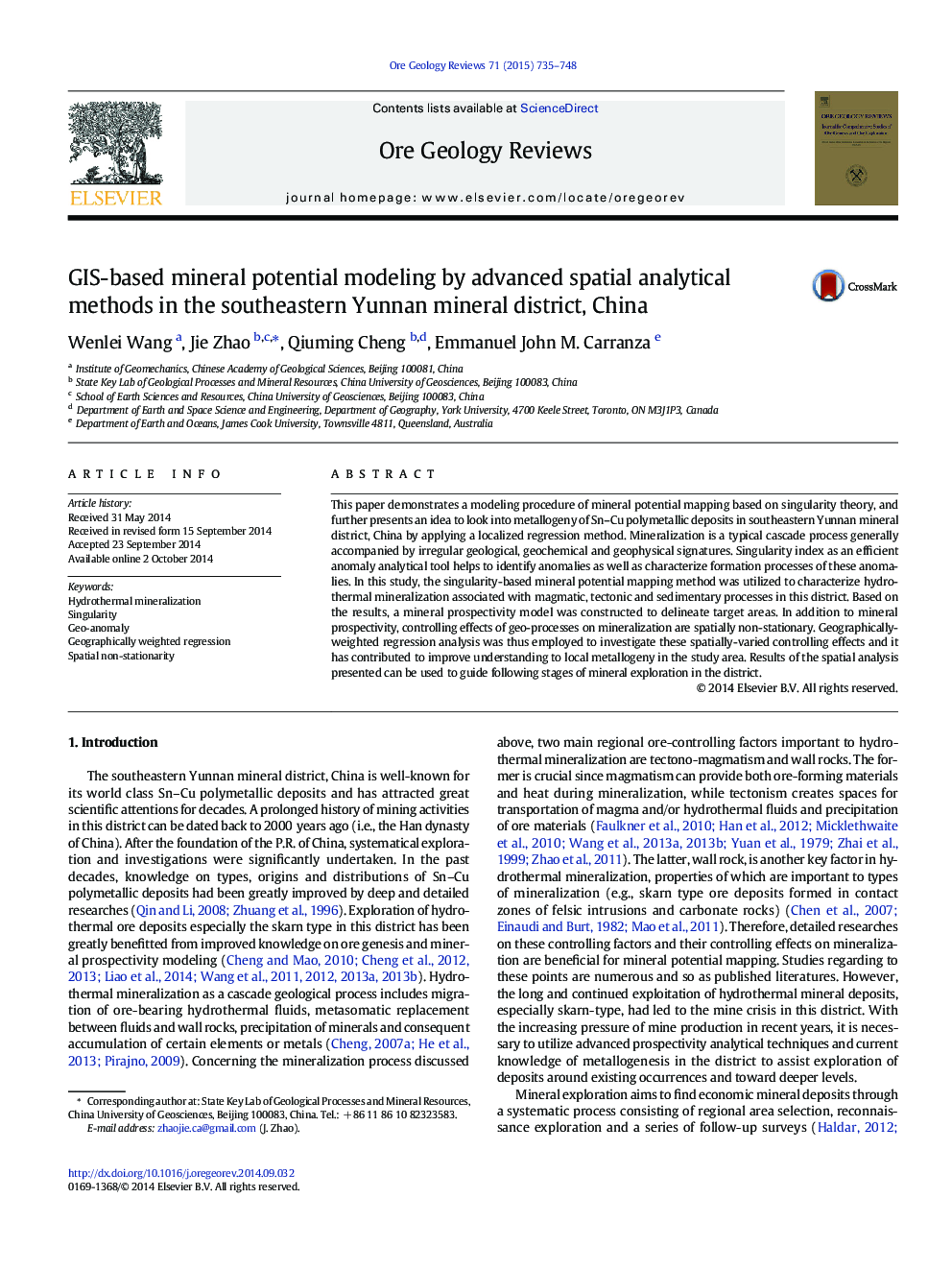| Article ID | Journal | Published Year | Pages | File Type |
|---|---|---|---|---|
| 4697047 | Ore Geology Reviews | 2015 | 14 Pages |
This paper demonstrates a modeling procedure of mineral potential mapping based on singularity theory, and further presents an idea to look into metallogeny of Sn–Cu polymetallic deposits in southeastern Yunnan mineral district, China by applying a localized regression method. Mineralization is a typical cascade process generally accompanied by irregular geological, geochemical and geophysical signatures. Singularity index as an efficient anomaly analytical tool helps to identify anomalies as well as characterize formation processes of these anomalies. In this study, the singularity-based mineral potential mapping method was utilized to characterize hydrothermal mineralization associated with magmatic, tectonic and sedimentary processes in this district. Based on the results, a mineral prospectivity model was constructed to delineate target areas. In addition to mineral prospectivity, controlling effects of geo-processes on mineralization are spatially non-stationary. Geographically-weighted regression analysis was thus employed to investigate these spatially-varied controlling effects and it has contributed to improve understanding to local metallogeny in the study area. Results of the spatial analysis presented can be used to guide following stages of mineral exploration in the district.
